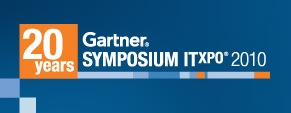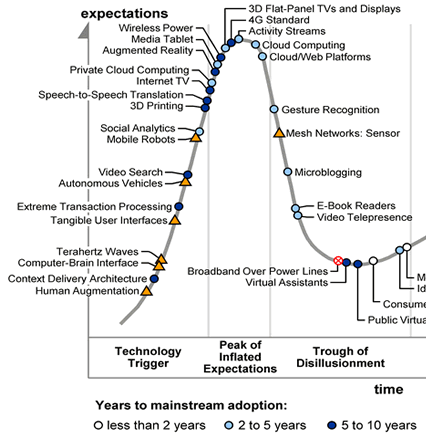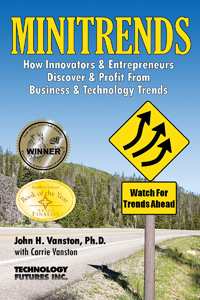Trends Favor Working from Home
November 8, 2010
 A Santa Clara company is combining the hottest technology trends with shifting demographic trends to revolutionize the business of customer service representatives. The firm is called LiveOps, and it’s fair to say the owners have their heads in the clouds.
A Santa Clara company is combining the hottest technology trends with shifting demographic trends to revolutionize the business of customer service representatives. The firm is called LiveOps, and it’s fair to say the owners have their heads in the clouds.
Cloud computing, that is. LiveOps offers several major technology solutions for businesses based on cloud computing. One is called “Workforce in the Cloud,” an on-demand workforce for outsourced call centers. If you operate a call center, you know there are slow times when most of the employees are idle, and peak times where you really could use more staff to handle the volume.
LiveOps solves that problem by allowing you to scale up or down the number of customer service reps available in half-hour increments! The company claims it operates the world’s largest virtual call center, with over 20,000 agents available to handle whatever their clients need.
But don’t think that LiveOps has those agents on a cloud somewhere waiting to be called. LiveOps hires independent contractors on the same basis as it sells its services: in half-hour increments. Work-from-home agents can choose the times they are willing to be available with 30-minute contracts. LiveOps is thus riding the trend of work-from-home contractors that John and Carrie Vanston explore in their new book, MINITRENDS.
“It is estimated that as much as twenty-five percent of all white collar work is now being done in private residences,” say the Vanstons, whose book points out several promising Minitrends in providing services for work-at-home contractors.
LiveOps was profiled in a USA Today article last month by Paul Davidson, who covers economic news for “the nation’s newspaper.” Davidson says that a stunning “68% of the 593,000 jobs added by private employers” since September are temp workers. The trend the Vanston’s explore in their book is accelerating.
Davidson looks at the ups and downs of the issue in a lengthy feature article in a newspaper not known for its depth. The upside is mostly for employers, who find that firing all their workers, losing the company headquarters, and avoiding all those benefits and taxes is liberating. Even if it translates into lower revenues, profits usually improve.
For the employees, the picture is not so rosy. They tend to lose benefits and stability, but enjoy an increase in flexibility and independence. Sometimes they earn more as contract workers than they made as employees.
“It appears likely that the fraction of people working at home will continue to grow,” say the Vanstons. “As a result, the need for support services and facilities — and the market for providing them — will also grow for the foreseeable future.”
STEVE O’KEEFE
News Editor, Minitrends Blog
Source: “Freelance workers reshape companies and jobs,” USA Today, 10/13/10.
Source: MINITRENDS: How Innovators & Entrepreneurs Discover & Profit From Business & Technology Trends, Technology Futures, Inc., pp. 78-81.
Image by Dave Dugdale of rentvine, used under its Creative Commons license.
Intelligence Economy Has Arrived, Says Gartner Guru Sondergaard
October 21, 2010
 Peter Sondergaard, head of research for consulting giant, Gartner, Inc., in his opening remarks at the Gartner Symposium in Orlando, Florida, on October 18, forecast that “we are on our way to an IT-driven intelligence society,” according to Michael J. Miller on PC Magazine‘s Forward Thinking blog.
Peter Sondergaard, head of research for consulting giant, Gartner, Inc., in his opening remarks at the Gartner Symposium in Orlando, Florida, on October 18, forecast that “we are on our way to an IT-driven intelligence society,” according to Michael J. Miller on PC Magazine‘s Forward Thinking blog.
Miller is the former Chief Content Officer for Ziff Davis Media and the editor of Forward Thinking. His coverage of Sondergaard’s remarks is extensive and compelling. He quotes Gartner guru Sondergaard as saying:
By 2012, the Internet will be 75 times larger than it was in 2002.
Gartner’s Symposium doubles as an Information Technology (IT) expo. Ten days ago, Gartner released its much-hyped Hype Cycle, boosting visibility in advance of the big event. We criticized the “emerging technology” Hype Cycle here for excluding social networking.
According to Miller, Sondergaard included “social computing” in his list of the top four trends driving IT in his opening remarks. The other three are context-aware computing, pattern-based strategy, and cloud computing, which Gartner’s own HypeCycle says is “past its peak.”
Miller quotes Sondergaard:
Information will be the oil of the 21st century.
In their book, MINITRENDS, John H. Vanston and Carrie Vanston cover the Minitrend of Increasing Use of Electricity in Industrial Processes, where they discuss the concept that the value of goods increases with the amount of information contained in them:
Manufacturing can be defined as the transformation of materials from one form to another more valuable form using energy and information. In general, the greater the information content of the process, the greater the efficiency, the smaller the waste of material and energy, and the smaller the pollution-producing side streams will be. For example, sand can be used as filler for asphalt, as a component of fine china, or as a ingredient in an electronic computer chip. The basic difference between these uses is the amount of information embedded in the silicon (sand) during the production process. Electrical processes can be used to materially increase information content to material.
That mindbending little excerpt comes courtesy of the Edison Electric Institute. It’s one of the interesting trends John and Carrie have uncovered in this book.
If you are looking for a Minitrend Adventure, think about how you can increase the information content in the things around you — before someone else does.
STEVE O’KEEFE
News Editor, Minitrends Blog
Source: “Four Big Trends Changing Computing, Gartner Says,” PCMagazine, Forward Thinking Blog, 10/18/10
Source: Gartner Symposium Live Blog (SymLive), 10/17/10 – 10/21/10.
Image of the Gartner Symposium 2010 logo is used under Fair Use: Reporting.
Technology Forecast Favors Cloud Computing, Clean Tech
October 18, 2010
Legal services behemoth DLA Piper released a new Technology Leaders Forecast Survey, based on an email survey of thousands of technology company executives. Despite the fact that consulting group Gartner says cloud computing has peaked, DLA Piper’s forecast shows cloud computing as the number-one technology for growth potential in the near future:

Chart illustrating the most promising growth opportunities for the technology industry. Source: DLA Piper Technology Leaders Forecast Survey.
Second only to cloud computing is “clean tech.” Clean technology is one of the only areas where technology executives welcome government assistance in the marketplace. DLA Piper partner Craig Tighe explains why 84% of the business executives surveyed favor tax incentives and other government stimulus for clean tech, while only 23% think government should be involved in stimulating growth in tech projects:
The capital requirements and ROI timing for Clean Tech are not ideal for the current venture capital model. The infrastructure and financing requirements are massive, often in the hundreds of millions of dollars.
DLA Piper’s Technology Leaders Forecast Survey seems to focus mostly on political issues, such as whether tech execs think that the Bush tax cuts should be extended (yes), the U.S. will experience a double-dip recession (no), and whether they plan on boosting hiring (yes). The survey appears to have been rushed out ahead of the U.S. congressional elections in hopes of influencing public opinion on these issues. The previous DLA Piper Technology Leaders Forecast Survey was released just last April, after two years without a survey.
Most of the media coverage of the survey, such as San Francisco-based Ari Levy’s commentary for Bloomberg in the San Francisco Chronicle, focused on the difficulty of financing initial public offerings (IPOs). But there are some technology trends hidden in this highly political survey that are important for Minitrends entrepreneurs. Click on this link to download a PDF of the complete Technology Leaders Forecast Survey.
STEVE O’KEEFE
News Editor, Minitrends Blog
Source: “DLA Piper Technology Leaders Forecast Survey,” 10/12/10
Source: “Venture Funding Shrinks Leaving Scores of ‘Walking Dead’ Firms,” Bloomberg/San Francisco Chronicle, 10/11/10
Image courtesy DLA Piper, used under Fair Use: Commentary.
Gartner’s Hype Cycle Says Cloud Computing Has Peaked
October 12, 2010

2010 Gartner Hype Cycle for Emerging Technologies
The analysts at Gartner have released the latest version of their much-hyped Hype Cycle for Emerging Technologies. The report indicates that poor “cloud computing” has entered the long, disappointing phase of technological maturity, though “private cloud computing” is still ascending the pinnacle of hype.
The Gartner Hype Cycle describes a curve of technological adoption. It plots nearly 2,000 new technologies at one of the five phases of evolution, which Gartner colorfully describes as:
- Technology Trigger
- Peak of Inflated Expectations
- Trough of Disillusionment
- Slope of Enlightenment
- Plateau of Productivity
Gartner bunches the 1,800 technologies it tracks into roughly 80 groupings by technology, topic, or industry. One of the most popular groupings is “emerging technologies,” for which Gartner releases a free Hype Cycle chart (shown above). Gartner Vice President Jackie Fenn summarizes the emerging technologies cycle:
High-impact technologies at the Peak of Inflated Expectations during 2010 include private cloud computing, augmented reality, media tablets (such as the iPad), wireless power, 3D flat-panel TVs and displays, and activity streams, while cloud computing and cloud/Web platforms have tipped over the peak and will soon experience disillusionment among enterprise users.
How quickly the cloud moves along! Last year, “cloud computing” was Gartner’s most popular Hype Cycle. Downloads of the Cloud Computing report, which retails for $1,995, have led all other reports, according to the company’s website.
In trying to determine the source of Gartner’s Hype Cycle, I couldn’t gather much information without paying thousands to download actual reports. On the blog called Mastering the Hype Cycle, Mark Raskino, co-author with Jackie Fenn of the “2010 Hype Cycle Special Report,” explains the process this way:
We have multiple review stages. Each individual technology profile is reviewed by peer specialist analysts, each hype cycle is then reviewed by a wider group of domain analysts. Then those of us in the hype cycle special report team check each area has understood and applied the method properly… to avoid local group think or cross-research inconsistencies.
They make sure the “method” has been applied properly, but they don’t tell you what the method is. How did someone discover this curve? Was this pattern revealed by the analysis of data, or is it speculation? Are technologies forced to fit somewhere in this preassigned sign wave? Who assigns technologies to these positions, if it’s not an analytical process?
British computer scientist and author Richard Veryard, a specialist in the economics of information systems, sized-up the Gartner Hype Cycle on his blog, Demanding Change:
All the points are perfectly on the line. To a scientific mind, this indicates that the coordinates are not based on any real objective measurement, and that the curve itself is not subject to scientific investigation or calibration.
In the most recent Hype Cycle for Emerging Technologies, shown above, Gartner uses essentially three different measures for the X-axis. The Y-axis is simply labeled “Expectations” — the higher the point, the greater the expectations for that technology. The base of the X-axis is labeled “Time,” but immediately above it, “Time” is broken into five stages of development, which take varying amounts of time. Also, the icons used to plot each technology have their own time constraints, indicating how many “years to mainstream adoption.” The result is a confusing popularity contest, not an analytical tool.
How would Gartner account for the decline of MySpace simultaneously with the rise of Facebook? I notice that social networking is nowhere on the emerging technologies chart, even though virtual worlds are, and blogging is too.
Gartner produces 75 Hype Cycles a year, retailing at $1,995 each. It charges the same for outdated reports going back five years. Where do you think Hype Cycles fit on the timeline? Are you in the “trough of disillusionment” or the “slope of enlightenment” with Hype Cycles? We’d like to hear your comments on how useful these reports are.
STEVE O’KEEFE
News Editor, Minitrends Blog
Source: “Gartner’s 2010 Hype Cycle Special Report Evaluates Maturity of 1,800 Technologies,” Gartner, Inc., 10/07/10
Source: “The 2010 Gartner Hype Cycles Are Getting Closer,” Gartner’s Mastering the Hype Cycle, 07/08/10
Source: “Technology Hype Curve,” Demanding Change, 09/16/05
Image courtesy Gartner, Inc., used under Fair Use: Commentary.


